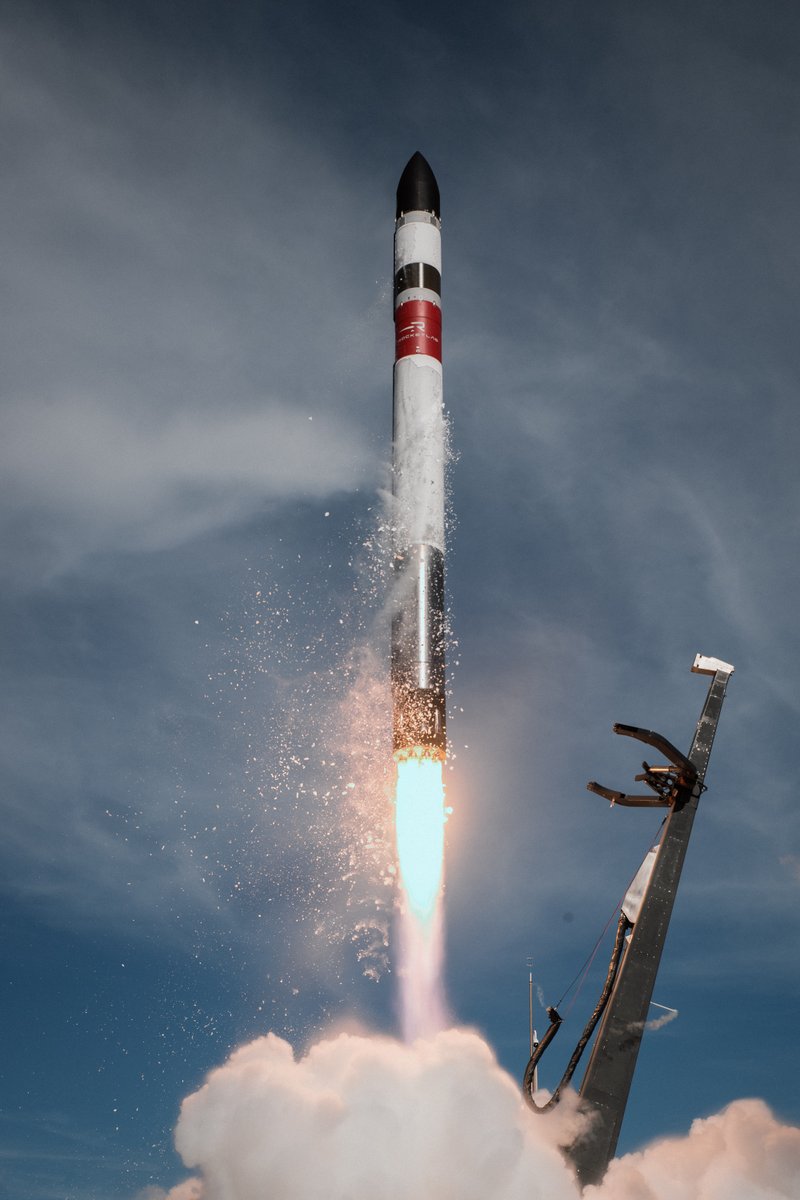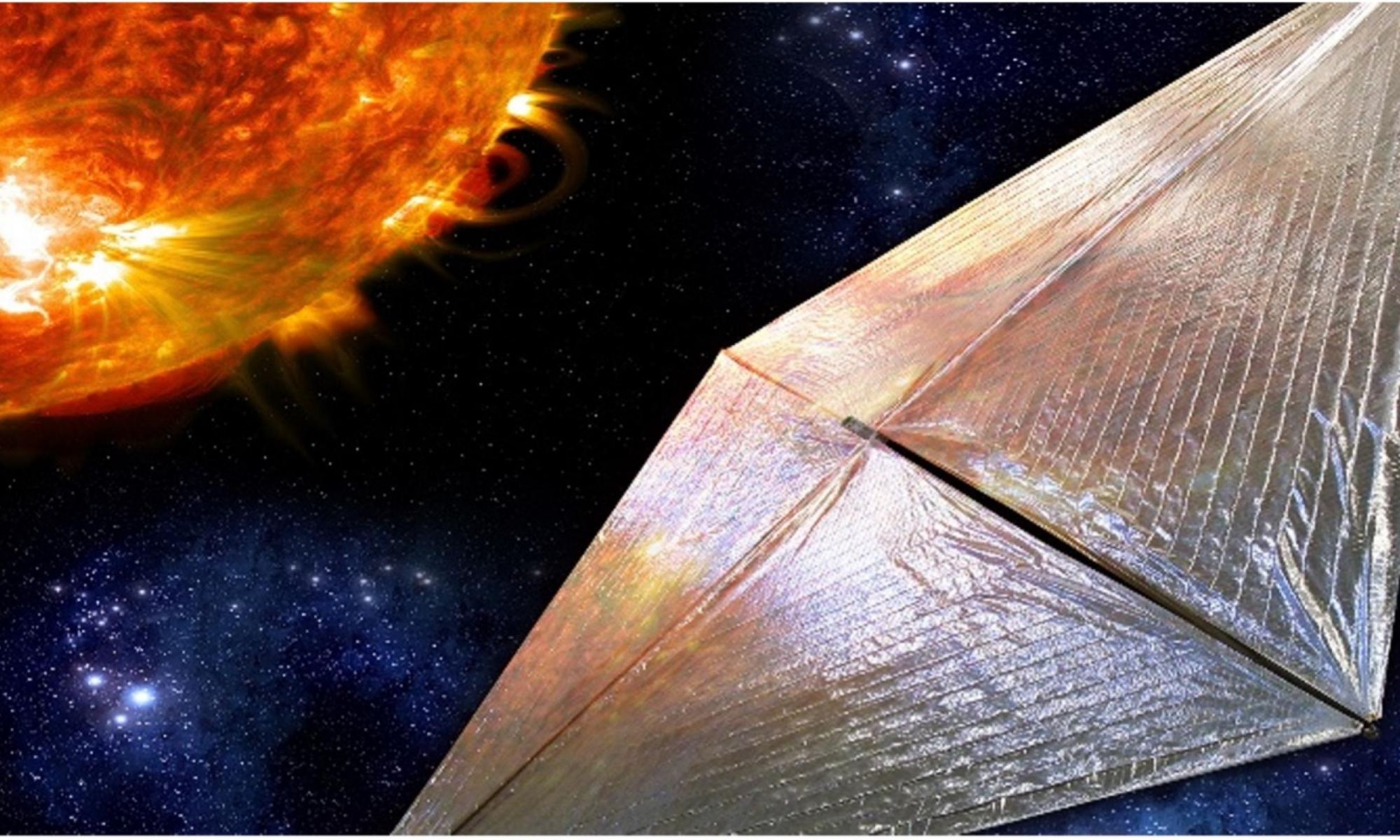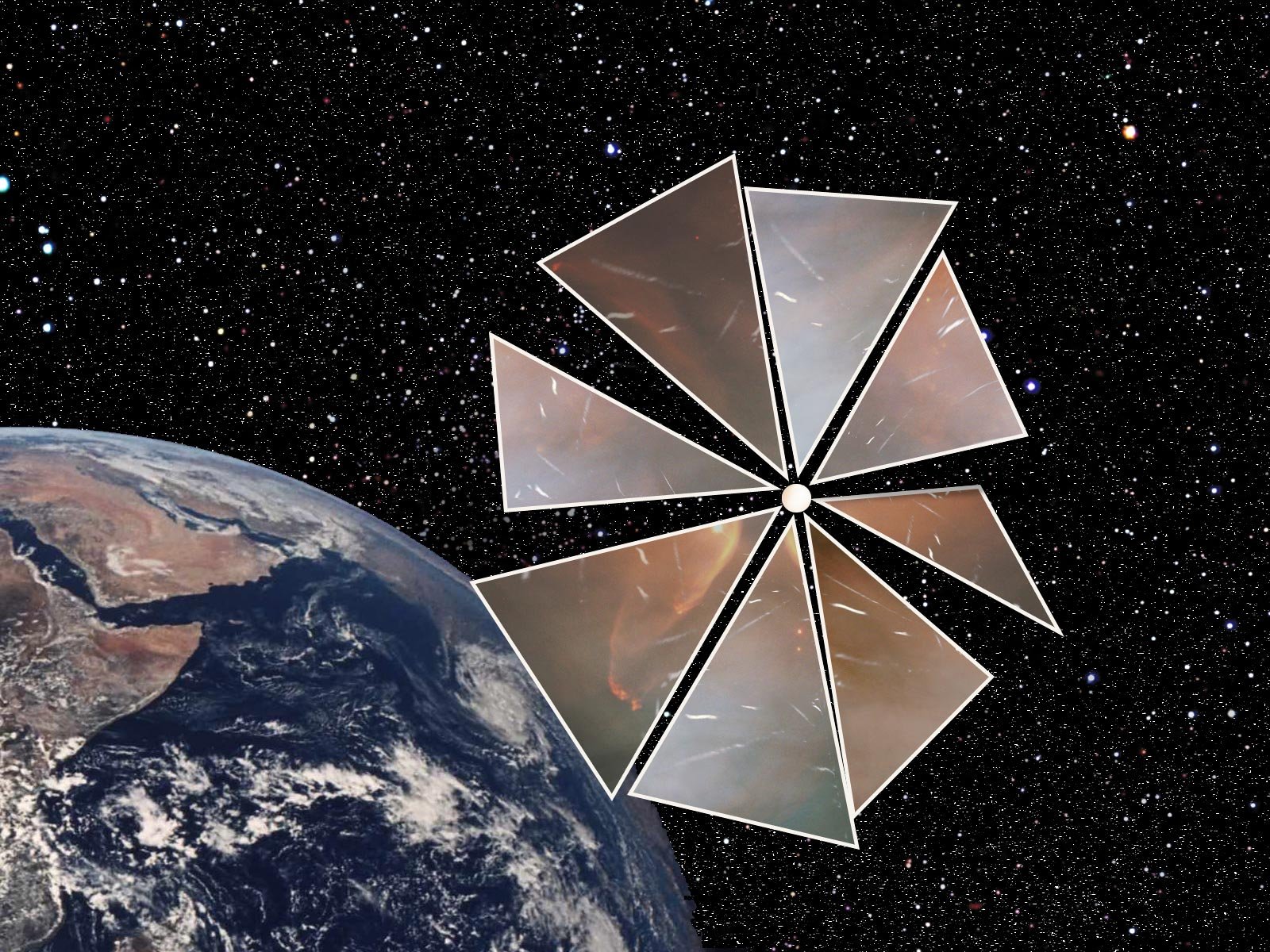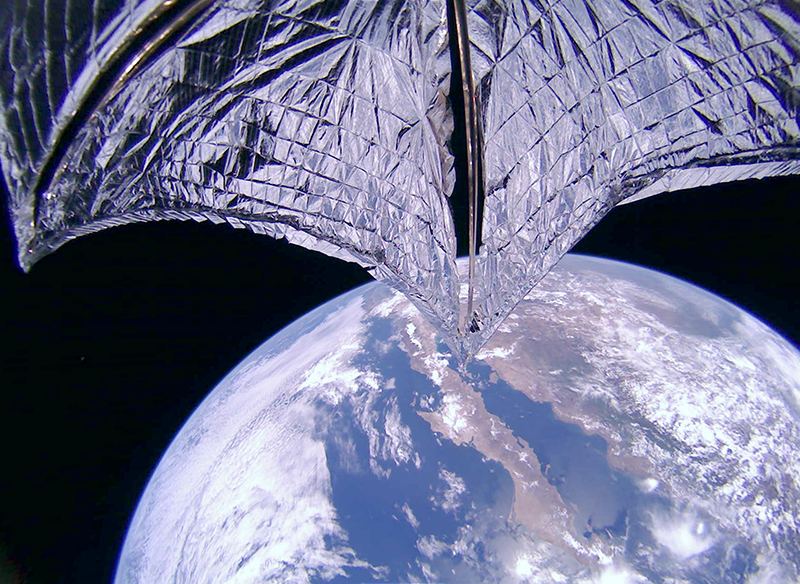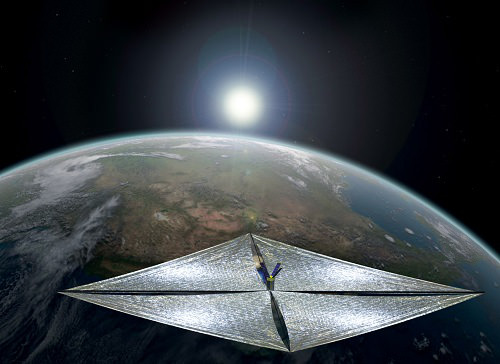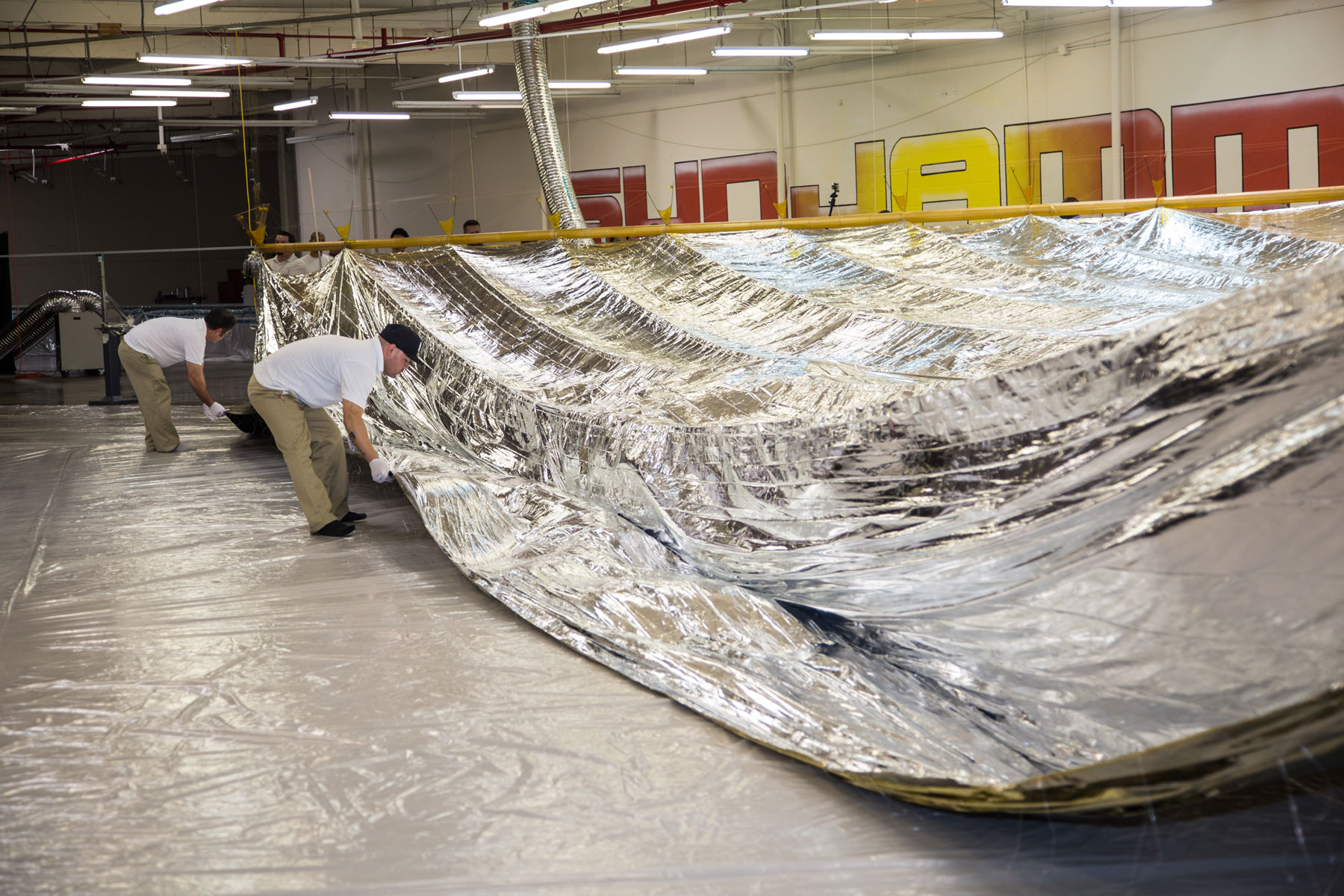Solar Sails are an enigmatic and majestic way to travel across the gulf of space. Drawing an analogy to the sail ships of the past, they are one of the most efficient ways of propelling craft in space. On Tuesday a RocketLab Electron rocket launched NASA’s new Advanced Composite Solar Sail System. It aims to test the deployment of large solar sails in low-earth orbit and on Wednesday, NASA confirmed everything is looking good for sail deployment
Continue reading “NASA’s New Solar Sail Has Launched and Will Soon Deploy”NASA Tests a Solar Sail Segment of its Enormous Solar Cruiser Mission
A team led by NASA’s Marshall Space Flight Center (MSFC) was recently selected to develop a solar sail spacecraft that would launch sometime in 2025. Known as the Solar Cruiser, this mission of opportunity measures 1653 m2 (~17790 ft2) in area and is about the same thickness as a human hair. Sponsored by the Science Mission Directorate’s (SMD) Heliophysics Division, this technology demonstrator will integrate several new solar sail technologies developed by various organizations to mature solar sail technology for future missions.
In a recent video released by NASA, we see engineers and industry partners at the MSFC in Huntsville, Alabama, unfurling a segment of the prototype solar sail. The video, taken on October 13th, shows how the teams used two 30.5 m (100-foot) lightweight composite booms to unfurl a 400 m2 (4,300 ft2) quadrant of the solar sail prototype for the first time. Once realized, the Solar Cruiser demonstrator will validate technologies that enable future missions to study the Sun, its interaction with Earth, and its extended atmosphere (aka. heliosphere).
Continue reading “NASA Tests a Solar Sail Segment of its Enormous Solar Cruiser Mission”A Small Satellite With a Solar Sail Could Catch up With an Interstellar Object
When Oumuamua, the first interstellar object ever observed passing through the Solar System, was discovered in 2017, it exhibited some unexpected properties that left astronomers scratching their heads. Its elongated shape, lack of a coma, and the fact that it changed its trajectory were all surprising, leading to several competing theories about its origin: was it a hydrogen iceberg exhibiting outgassing, or maybe an extraterrestrial solar sail (sorry folks, not likely) on a deep-space journey? We may never know the answer, because Oumuamua was moving too fast, and was observed too late, to get a good look.
It may be too late for Oumuamua, but we could be ready for the next strange interstellar visitor if we wanted to. A spacecraft could be designed and built to catch such an object at a moment’s notice. The idea of an interstellar interceptor like this has been floated by various experts, and funding to study such a concept has even been granted through NASA’s Innovative Advanced Concepts (NIAC) program. But how exactly would such an interceptor work?
Continue reading “A Small Satellite With a Solar Sail Could Catch up With an Interstellar Object”LightSail 2 Has Now Been in Space for 2 Years, and Should Last Even Longer Before Re-Entering the Atmosphere
The Planetary Society’s crowdfunded solar-sailing CubeSat, LightSail 2, launched on June 25th 2019, and two years later the mission is still going strong. A pioneering technology demonstration of solar sail capability, LightSail 2 uses the gentle push of photons from the Sun to maneuver and adjust its orbital trajectory. Within months of its launch, LightSail 2 had already been declared a success, breaking new ground and expanding the possibilities for future spacecraft propulsion systems. Since then, it’s gone on to test the limits of solar sailing in an ongoing extended mission.
Continue reading “LightSail 2 Has Now Been in Space for 2 Years, and Should Last Even Longer Before Re-Entering the Atmosphere”Want the Fastest Solar Sail? Drop it Into the Sun First
In the coming decades, multiple space agencies plan to return astronauts to the Moon (or to send them there for the first time) and mount the first crewed missions to Mars. Between that and the explosive growth we are seeing in Low Earth Orbit (LEO), there is no doubt that we live in an era of renewed space exploration. It’s therefore understandable that old and new concepts for interstellar travel are also being considered these days.
Right now, a considerable focus is on light sails that generate their own propulsion by radiation pressure or are accelerated by lasers. These concepts present all kinds of technical and engineering challenges. Luckily, Coryn Bailer-Jones of the Max Planck Institute for Astronomy (MPIA) recently conducted a study where he argues for a “Sun Diver” light sail that will pick up all the speed it needs by diving close to the Sun.
Continue reading “Want the Fastest Solar Sail? Drop it Into the Sun First”Hunting LightSail in Orbit
The hunt is on in the satellite tracking community, as the U.S. Air Force’s super-secret X-37B space plane rocketed into orbit today atop an Atlas V rocket out of Cape Canaveral. This marks the start of OTV-4, the X-37B’s fourth trip into low Earth orbit. And though NORAD won’t be publishing the orbital elements for the mission, it is sure to provide an interesting hunt for backyard satellite sleuths on the ground.
Previous OTV missions were placed in a 40 to 43.5 degree inclination orbit, and the current NOTAMs cite a 61 degree azimuth angle for today’s launch out of the Cape which suggests a slightly shallower 39 degree orbit. Such variability speaks to the versatile nature of the second stage Centaur motor.
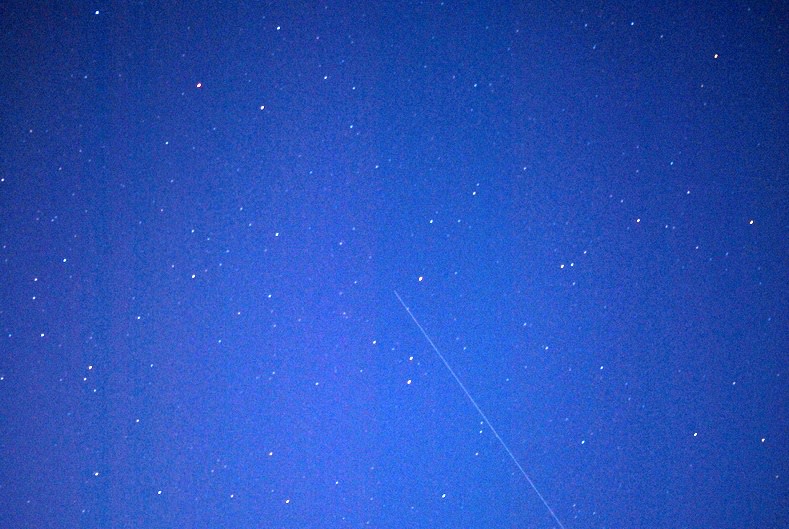
There’s also been word afoot that future X-37B missions may return to Earth at the Kennedy Space Center, just like the Space Shuttle. To date, the X-37B has only landed at Vandenberg Air Force Base in California.
But there’s also another high interest payload being released along with a flock of CubeSats aboard AFPSC-5: The Planetary Society’s Lightsail-1.
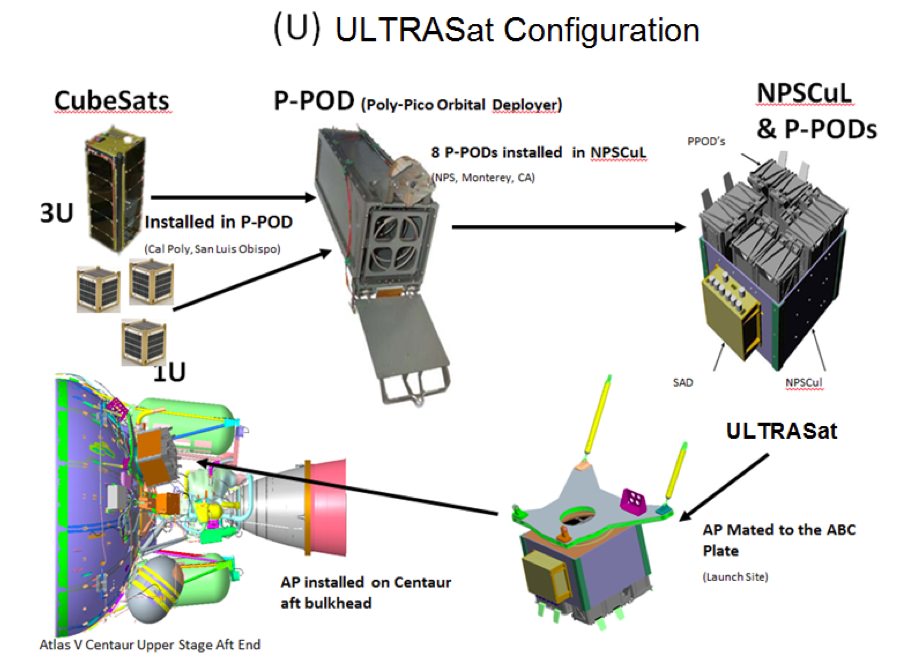
About the size of a loaf of bread and the result of a successful Kickstarter campaign, LightSail is set to demonstrate key technologies in low Earth orbit before the Planetary Society’s main solar sail demonstrator takes to space in 2016.
The idea of using solar wind pressure for space travel is an enticing one. A big plus is the fact that unlike chemical propulsion, a solar sail does not need to contend with hauling the mass of its own fuel. The idea of using a solar sail plus a focused laser to propel an interstellar spacecraft has long been a staple of science fiction. But light-sailing technology has had a troubled history—the Planetary Society lost its Cosmos-1 mission launched from a Russian submarine in 2001. JAXA has fared better with its Venus-bound IKAROS, also equipped with a solar sail. To date, the IKAROS solar sail is the largest that has been deployed, at 20-metres on the diagonal.
Another use for space sail technology is the commanded reentry of spacecraft at the end of their mission life, as demonstrated by NanoSail-D2 in 2011.
Prospects of seeing LightSail may well be similar to what we had hunting for NanoSail-D2. Unfolded, LightSail will be 32 square meters in size, or about 5.6 meters on a side. NanoSail-D2 measured 3.1 meters on a side, and the reflective panels on the Iridium satellites which produce brilliant Iridium flares exceeding Venus in brightness measure about the size of a large rectangular door at 1 x 3 meters. Even the Hubble Space Telescope can flare on occasion as seen from the ground if one of its massive solar arrays catches the Sun just right.
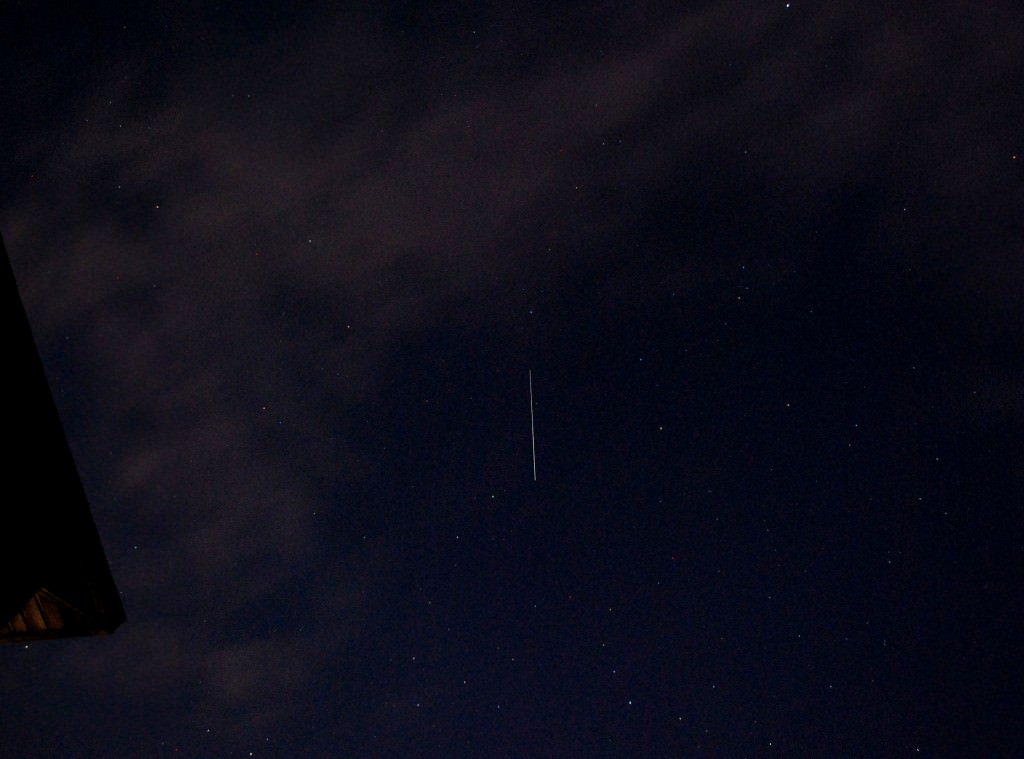
The 39 degree orbital inclination angle will also limit visible passes to from about 45 degrees north to 45 degrees south latitude.
Hunting down X-37B and LightSail will push ground observing skills to the max. Like NanoSail-D2, LightSail probably won’t be visible to the naked eye until it flares. What we like to do is note when a faint satellite is set to pass by a bright star, then sit back with our trusty 15x 45 image-stabilized binoculars and watch. We caught sight of the ‘tool bag’ lost during an ISS EVA in 2009 in this fashion. There it was, drifting past Spica as a +7th magnitude ‘star’. The key to this method is an accurate prediction—Heavens-Above now overlays orbital satellite passes on all-sky charts—and an accurate time source. We prefer to have WWV radio running in the background, as it’ll call out the time signal so we don’t have to take our eyes off the sky.
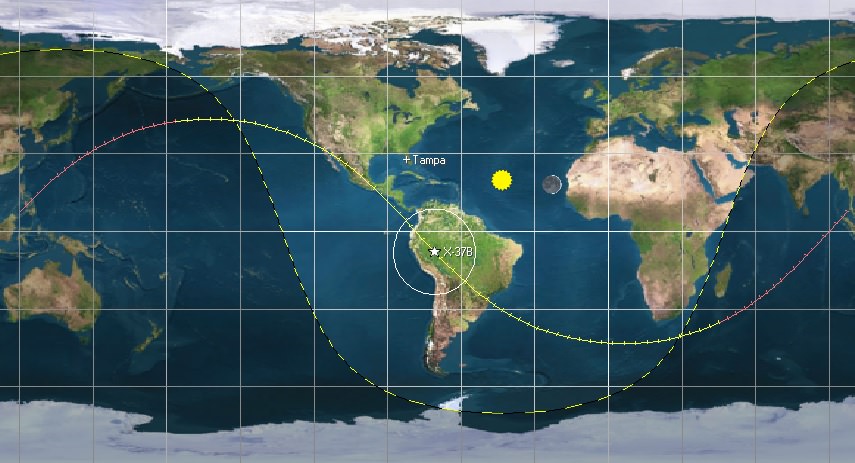
Veteran satellite watcher Ted Molczan recently discussed the prospects for spotting LightSail once it’s deployed. “By then, the orbit will be visible from the northern hemisphere during the middle of the night. The southern hemisphere may have marginal evening passes. Note that the high area to mass ratio with the sail deployed, combined with the low perigee height, is expected to result in decay as soon as a couple days after deployment.”
Read a further discussion concerning OTV-4 and associated payloads by Mr. Molczan on the See-Sat message board here.
The Planetary Society’s Jason Davis confirmed for Universe Today that LightSail will deploy 28 days after launch. But we may only have a slim two day observation window for LightSail between deployment and reentry.
A deployment of LightSail 28 days after launch would put it in the June 16th timeframe.
“That’s the nominal mission time, yes,” Davis told Universe Today. “Our orbital models predict 2-10 days. For our 2016 flight, the mission will last at least four months.”
The Planetary Society plans to have a live ‘mission control center’ to track LightSail after P-POD deployment, complete with a Google Map showing pass predictions.
Satellite spotting can be a fun and addictive pastime, where part of the fun is sleuthing out what you’re seeing. Hey, some relics of space history such as the early Vanguards, Telstars, and Canada’s first satellite Alouette-1 are still up there! Nabbing these photographically are as simple as plopping your DSLR on a tripod, setting the focus and doing a time exposure as the satellite passes by.
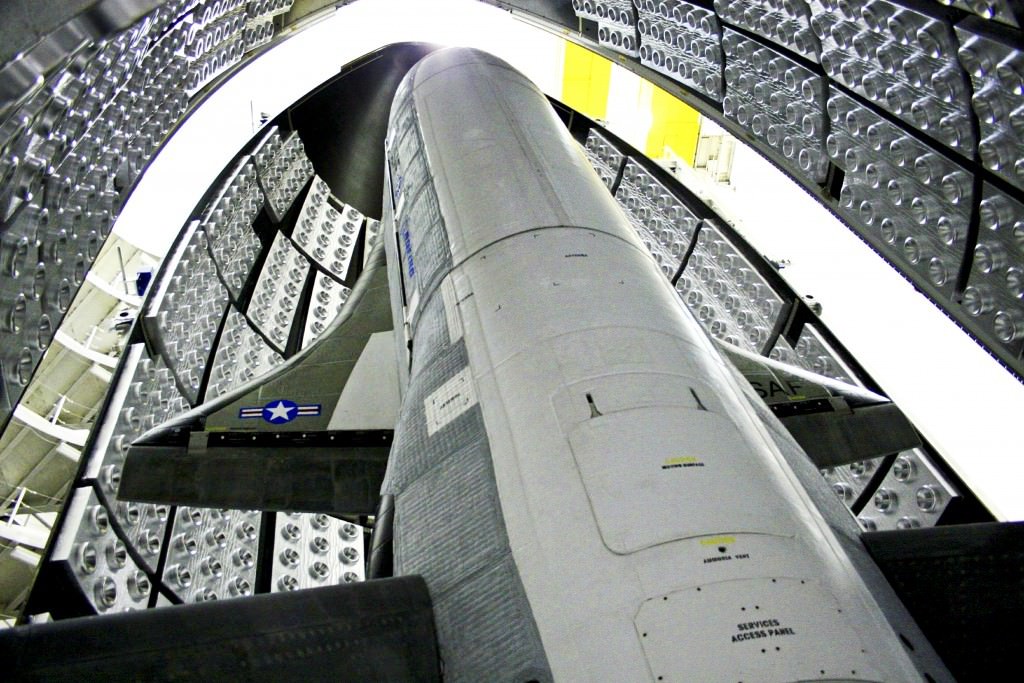
Here’s to smooth solar sailing and clear skies as we embark on our quest to track down the X-37B and LightSail-1 in orbit.
-Follow us as @Astroguyz on Twitter, as we’ll be providing further info on orbits and visibility passes as they are made public.
Huge Solar Sail Portion Unfurls In Crucial Ground Test
We’re sure the people in that picture above must have had sweaty hands as they unfurled a huge solar sail in front of the camera. What you’re seeing there is a crucial ground test in which a quarter of Sunjammer — the largest solar sail ever expected to fly — was unfurled under Earth gravity conditions Monday (Sept. 30).
Sunjammer is expected to launch in January 2015, a slight delay from an earlier projection of November 2014. This test took place under even tougher conditions than the sail will face in space, as there will be no atmosphere and it will be operating in microgravity, officials said.
According to the team (which included prime contractor L’Garde Inc., NASA and Space Services Inc.), everything went well.
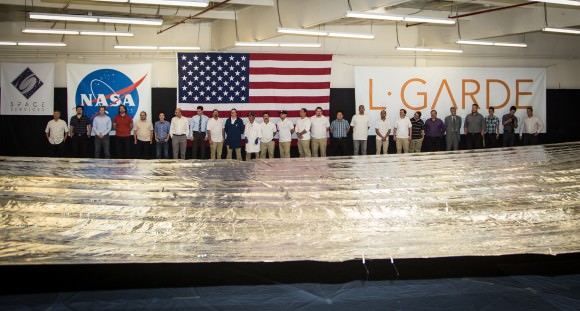
“If this test succeeded under these stressing conditions, we certainly anticipate it will work exceedingly well in space,” stated Nathan Barnes, L’Garde president.
Solar sails could one day be an alternative to conventional propellant-based spacecraft, providing that the spacecraft roam close enough to the sun to receive photonic pressure to do their maneuvers. There have been decades of development on the ground, but the first solar sail test took place in 2010 when Japan unfurled its IKAROS solar sail successfully.
Sunjammer, which would be NASA’s first solar sail in space, will look at solar activity. You can read more about the mission on its official website.
Source: Sunjammer
Separation Camera Takes Full Images and ‘Movie’ of IKAROS Solar Sail
[/caption]
Two small “separation cameras” were ejected from JAXA’s (Japan Aerospace Exploration Agency) IKAROS solar sail, which successfully took some amazing full images of the fully deployed sail. The cameras are quite small, cylindrical in shape about 6 cm in diameter and height. They were ejected from the sail using a spring, and then they looked back at IKAROS, and relayed the images wirelessly. The cameras are now floating off into space, having done their job of taking these images. Below, an animation, or movie made by combining several images.

We will measure and observe the power generation status of the thin film solar cells, accelerate the satellite by photon pressure, and verify the orbit control through that acceleration. Through these activities, we will ultimately aim at acquiring navigation technology through the solar sail.
So, now that we know the sail is fully deployed, next comes the big test of whether solar sailing will actually work. This is huge, to finally have the opportunity to test a solar sail in space.
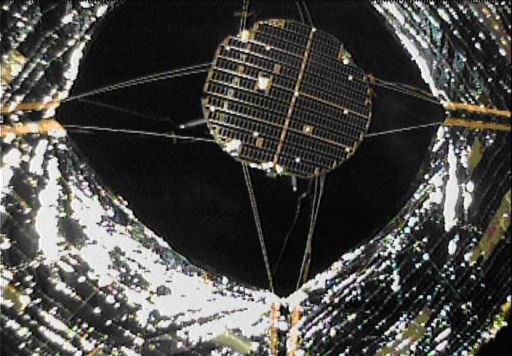
From the IKAROS blog, speaking as the cameras:
Unfortunately I only have the battery, and…working time is very short for about 15 minutes after I do my best work is a planets around the Sun, the world’s smallest man-made flying with IKAROS continue.
Translation: these tiny cameras only had about 15 minutes to do their job of taking pictures before becoming dead little satellites orbiting around the sun.
IKAROS was launched on May 21, 2010 from the Tanegashima Space Center in Japan.
We’ll keep you posted as JAXA begins testing the solar sail.
Japanese Solar Sail Deploys Successfully
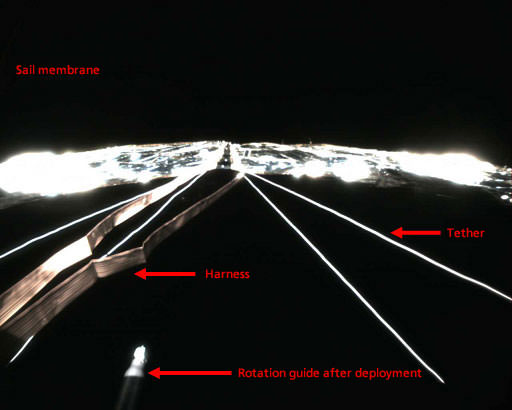
[/caption]
New images and data from the IKAROS solar sail show the thin solar film has deployed and expanded successfully and is now generating power. Since its launch on May 21, 2010, teams from the Japan Aerospace Exploration Agency (JAXA), have been painstakingly checking out all the systems on IKAROS before deploying the sail, and even the process of unfurling the sail had been a slow process. JAXA began to deploy the sail on June 3, analyzing each step before proceeding. Yesterday, JAXA released a photo of a partially deployed sail (below), but didn’t offer much information as far as the status. But they now have confirmed that the sail was successfully expanded and is generating power. IKAROS is now about 7.7 million km from Earth.
In the image above, the harness is an electrical connection between the membrane and the main body, and the tether is the mechanical connection between the membrane and the main body.
And now comes the big test of the solar sail: will it provide the ability to navigate the spacecraft?
“We will measure and observe the power generation status of the thin film solar cells, accelerate the satellite by photon pressure, and verify the orbit control through that acceleration,” JAXA said in a press release. “Through these activities, we will ultimately aim at acquiring navigation technology through the solar sail.”
The craft will head towards Venus, and the exciting part will be finding out how fast and accurate the solar sail can fly.
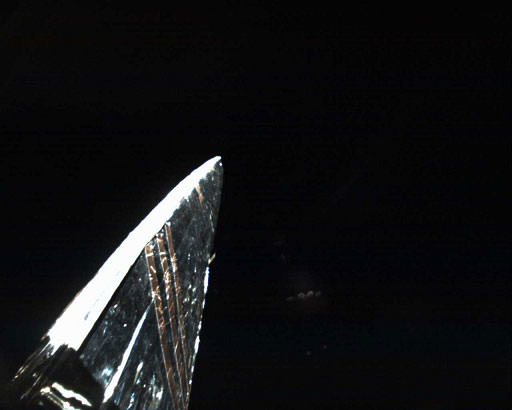
From the IKAROS blog (translated from Japanese):
First, the spin rate and learned that he had first IKAROS have successfully deployed from the attitude data. Then, I was part of the downlink data captured with the camera image monitor confirmed that the sail has been deployed from the image. On June 10 has been expanded to clean the sail, “stretched states” get the picture, confirmed the successful deployment of the sail after deployment finished the second check.
Also check the power of solar cells was carried out together, we achieved minimum success!
Power will be realized with the world’s first solar powered sail development.
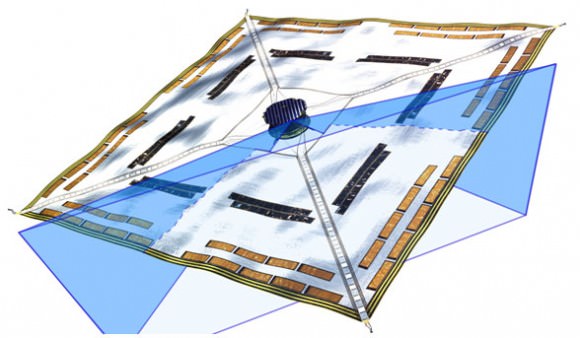
See the IKAROS webpage for more info and detailed graphics.
Sources: JAXA, IKAROS blog
Japan’s Venus Orbiter and Solar Sail Missions Launch Successfully
Japan’s first robotic mission to Venus and an experimental solar sail launched successfully from the Tanegashima Space Center in southern Japan. The Venus Climate Orbiter, or Akatsuki, the IKAROS solar sail and several smaller payloads launched aboard an H-IIA rocket at 6:58 local time May 21 (21:58 UTC May 20). The video shows a very smooth-looking launch, and 27 minutes later, JAXA confirmed the successful separation of Akatsuki. Then, about 15 minutes after that, the solar sail canister separated.
Continue reading “Japan’s Venus Orbiter and Solar Sail Missions Launch Successfully”

